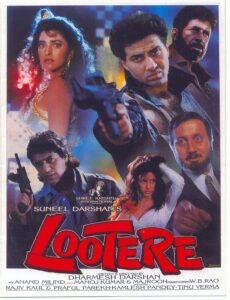Let The Raven Talk
Unveiling the Hardships: Models Caught in a Web of Debt
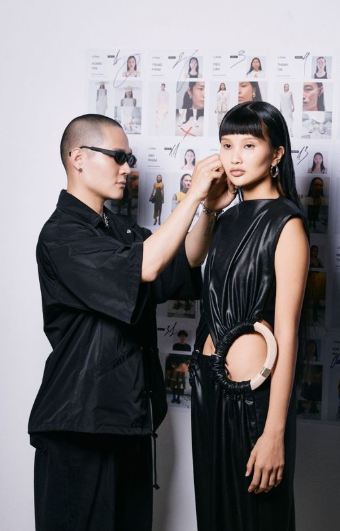
In the glitzy facade of the fashion industry, a harsh reality lurks, particularly for aspiring models. The first runway was held way back in 1860s by Charles Frederick Worth, who used live models to display his collection, and since then the fashion industry has never strayed away from this tradition and in fact given birth the influential names in the world of fashion, women of incomparable beauty and grace who ultimately became the muse of many designers.
However, the journey for every model is not the same. The modelling agencies have continued to remain unregulated for a long time in the fashion industry both in India and abroad. The lack of specific legislations for the regulation of modelling agencies have always been a point of concern and even though efforts have been made in the past decade to straighten out the loopholes, the reality feels yet to far.
Let’s delve into a poignant real-life example, recently many news outlets wrote about the case of models from African countries particularly from refugee camps suffering at the hands of modelling agencies broke out.
Candice (a fictious name used to protect her identity), a French model of East African heritage. When she ventured into the world of modeling, she had no inkling that she would be burdened with the responsibility of covering her travel and other expenses. “When you get your first job, that’s how you realize it wasn’t free. You go and ask about your pay and they say, ‘You don’t have money because you’re in debt.’ Then you understand,” she recounted. This shocking revelation struck her hard, highlighting the stark contrast between perception and reality in the modelling industry.
Candice’s story is not a unique incident. Another model, Achol Malual Jau, a 23-year-old from a Kenyan refugee camp, embarked on a journey to London with dreams of becoming a supermodel. However, within a mere five months, she found herself back in the camp, burdened with a staggering debt of approximately €3,000. Unfortunately, Candice and Jau’s experiences are shared by numerous models chasing the same dream, all grappling with similar challenges ranging from language barriers to intricate financial paperwork. These obstacles leave them vulnerable and susceptible to exploitation, shedding light on the pressing need for industry-wide reforms.
The Language Barrier: A Major Hurdle
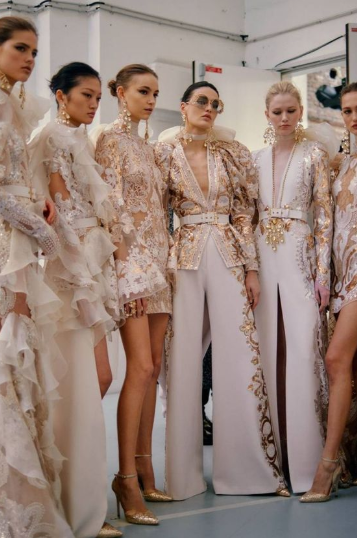
Language barriers compound the struggles of refugee models. Nyabalang Gatwech Pur Yien, for instance, signed a contract in English with a London agency, Select Model Management. However, Yien spoke Nuer, a tribal language, making it nearly impossible for her to comprehend the terms fully. Consequently, after just 17 days, she returned to her refugee camp owing Select €2,769.46, a debt that remains unpaid, highlighting the urgent need for multilingual support in the industry.
While modelling agencies continue to scout from refugee regions perhaps to feed new faces into the industry to contribute to the recent boom of POC inclusivity on the runway, leading to demand for more POC models at the same time monetising the lean figures of these young women surviving on camp rations.
Recovery of Expenses: A Tricky Terrain
Financial assistance from modeling agencies is common for budding models, especially when they start with limited resources. However, for refugees like Yien, this aid often becomes a double-edged sword. Initial support for expenses such as flights, hotels, and meals can quickly accumulate, surpassing what models earn. Unlike their counterparts with family financial backing, refugees lack this safety net, making them financially vulnerable and trapped in a cycle of debt.
And while many modelling agencies claim that they often remain lenient with the debt repayment, the fact that there is no resolution to this particular predicament remains.
A famous global model India Tuersley, went on explaining to Screenshot media that “for very few models it’s an overnight success. It can take months or even years to build up your portfolio and experience to begin profiting from the industry. [When I started,] I was fortunate enough to make the investment.”
Minimal Earnings: Exploitation in the Name of Dreams
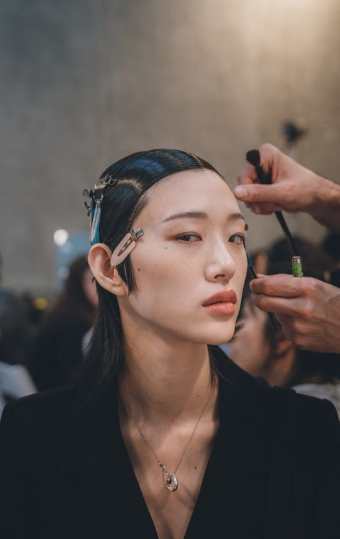
Refugee models, despite their hard work, often receive inadequate pay. Esmeralda Seay-Reynolds, a 16-year-old model, shared her experience of receiving only $130 for six weeks of laborious work.
“I don’t know if that is how much I should have made or if my agency just took that money. I have no idea because they don’t give you receipts,”
she explains to the magazine variety. The lack of transparency and absence of receipts leave models clueless about their earnings, contributing to their exploitation. This disparity underscores the need for fair compensation and ethical treatment within the fashion industry.
Debilitating Debt: A Persistent Issue
Debt bondage haunts many models, including Anna, who owes her modelling agencies £10,000 after three years in the industry. Even after walking for the famous luxurious brands like Prada, Mulberry, Comme Des Garcons and many others. The burden of debt starts early for models, hindering their growth and perpetuating financial instability.
The Path to Resolution: Demanding Transparency and Protection
In order to protect the rights of refugee models, the fashion industry must prioritize enhanced transparency. This can be achieved through the proper translation of contracts and the careful management of expectations, preventing models from returning home burdened with non-returnable debt. A prominent advocate for this cause is Mari Malek, a former refugee now residing in New York. She passionately asserts,
“It is time for the fashion world to wake up and question the human cost of their diversity and inclusion policies, particularly concerning young African lives.”
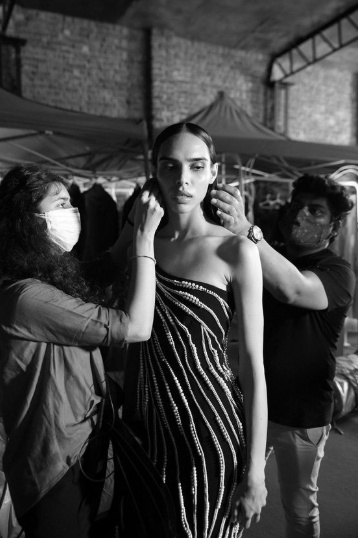
Renowned model scout Jane Duval’s insightful critique underscores the need for genuine intentions behind industry actions. She emphasizes the urgency of shifting from performative gestures to substantial, meaningful support, emphasizing the importance of sincerity in driving positive change within the fashion sector.
Furthermore, the industry has found support in American supermodel Carré Otis, who serves as a board member of Model Alliance, a non-profit organization dedicated to safeguarding the labor rights of individuals employed in the fashion industry. Model Alliance is actively championing The Fashion Workers Act in the US, a crucial step forward that promises a more just and ethical fashion industry. This legislation addresses issues such as one-sided contracts presented in languages which is not easily deciphered by the model and unsafe working conditions, offering hope for a safer and fairer environment for models.
Additionally, Russian model Ekaterina Ozhiganova, a co-founder of Model Law, stands as a dedicated protector of model rights. Through organizations like Model Law, efforts are made to provide comprehensive protection for models, ensuring their rights are respected and upheld in every aspect of their careers. These collective endeavors signify a significant step toward a more equitable and just fashion industry, where the rights and well-being of models, especially vulnerable refugees, are given the utmost priority.
Celebrating Success Stories: The Few Who Triumph
While stories like Adut Akech’s, who walked for Victoria Secret and Vogues, and Alek Wek’s, who is an icon of the fashion industry, inspire hope, they represent the exception rather than the norm. Successful refugees-turned-models are a testament to resilience, determination, and talent, but they also emphasize the need for systemic change. Acknowledging success stories is crucial, but it must not overshadow the urgent need for industry-wide reforms.
Conclusion: A Call for Change in the Fashion Industry
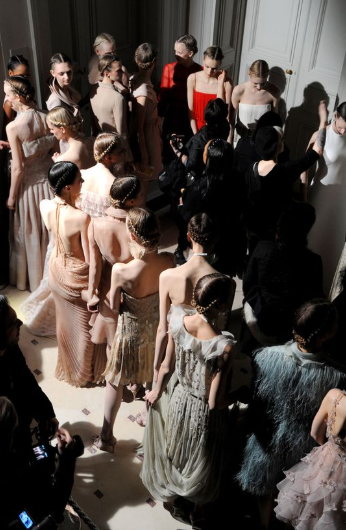
The exploitation of refugee models within the fashion industry is an alarming reality that demands immediate attention. Language barriers, financial exploitation, Minimal earnings, and Debilitating debt have cast a shadow over the dreams of countless aspiring models. The industry’s stakeholders, including agencies, scouts, and policymakers, must unite to enact meaningful change. Refugee models deserve more than broken promises and unfulfilled dreams. It is incumbent upon the fashion industry to create an environment where talent is nurtured, diversity is celebrated, and models are treated with dignity and respect. By addressing the challenges faced by refugee models, the industry can truly embrace its potential for positive transformation and create a future where every aspiring model, regardless of their background, can thrive.


